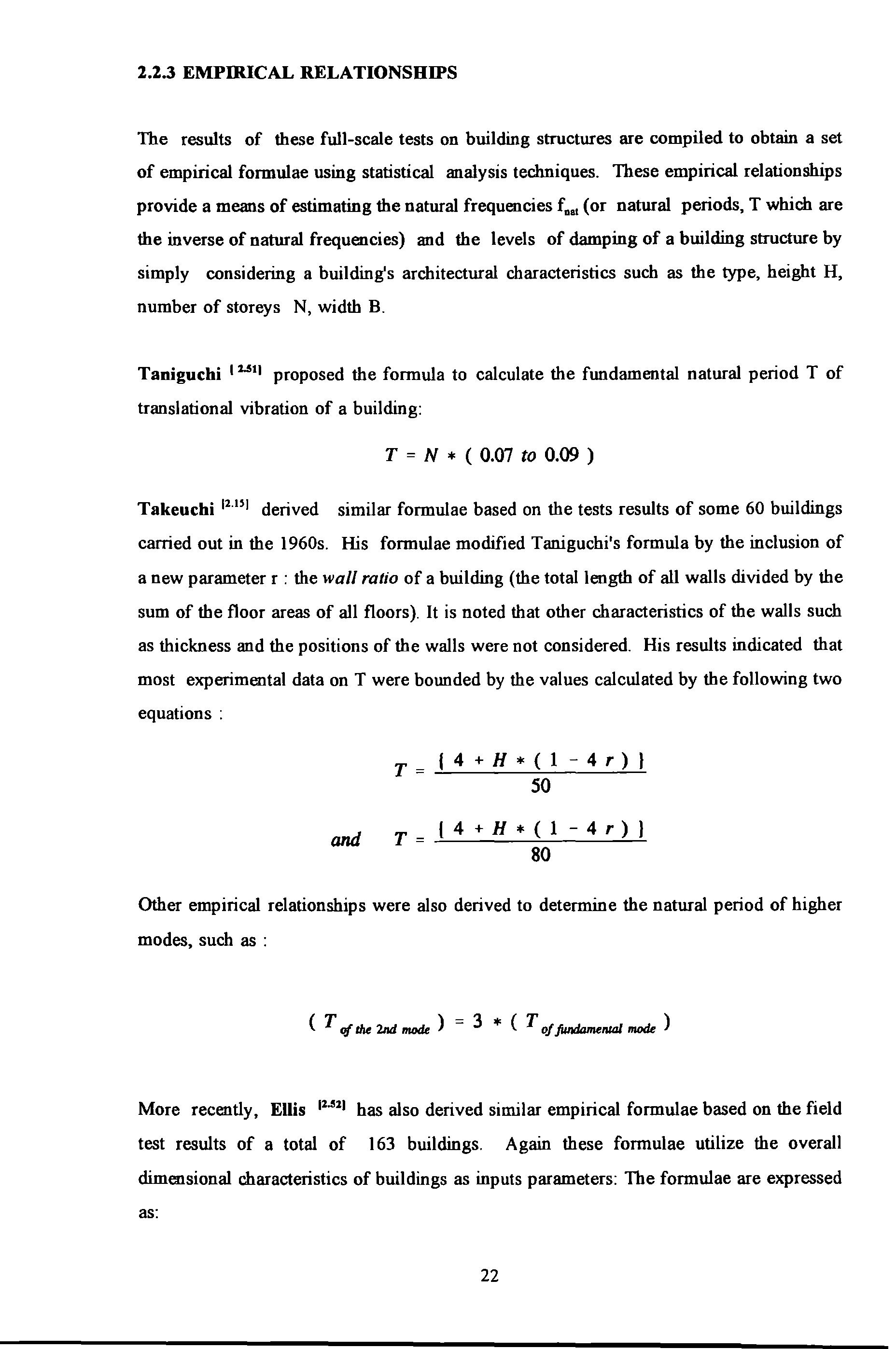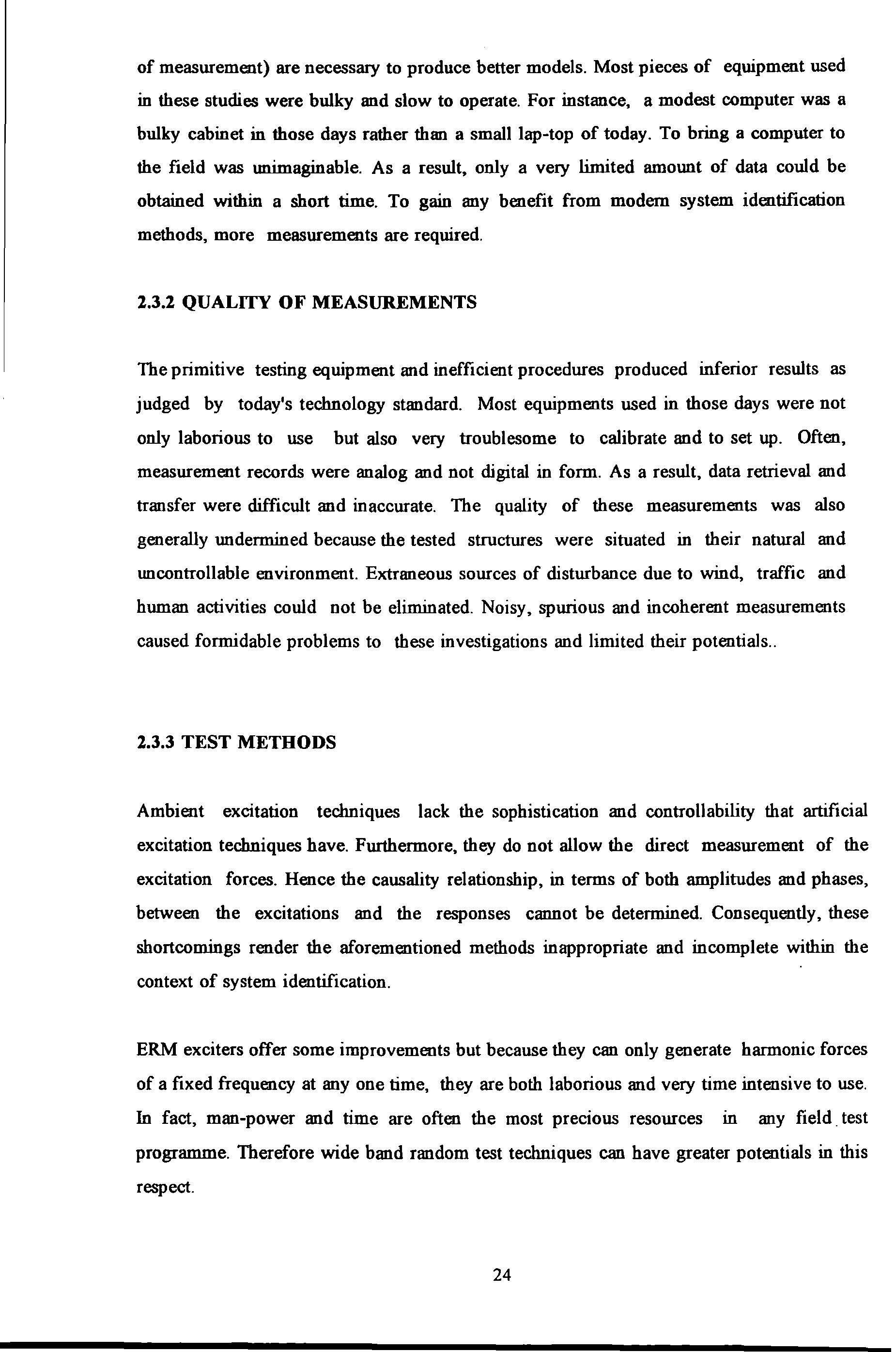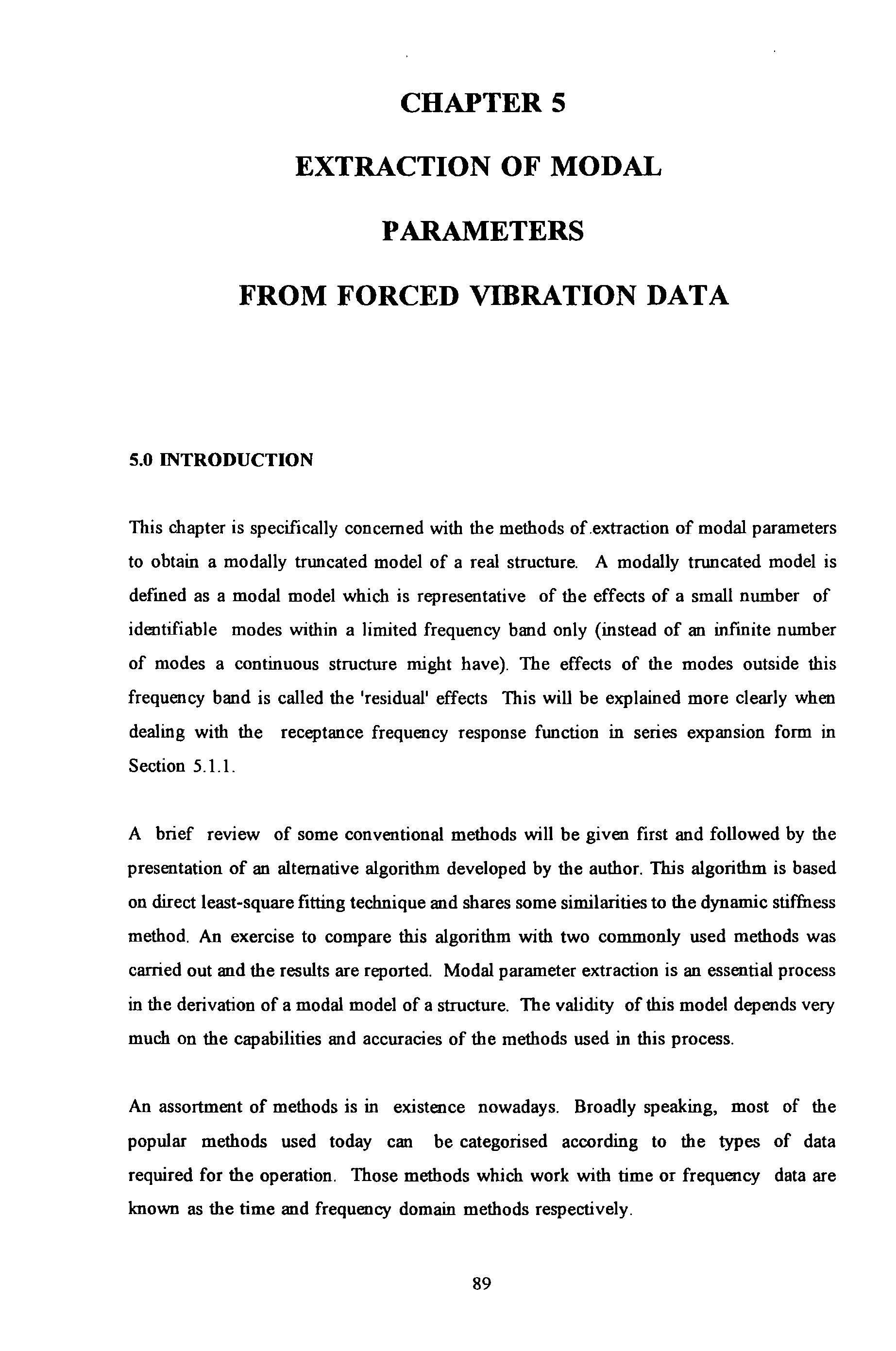
3 minute read
2.2.3 EMPIRICAL RELATIONSHIPS
from Technique of Determination of Structural Parameters From Forced Vibration Testing
by Straam Group
The results of these full-scale tests on building structures are compiled to obtain a set of empirical formulae using statistical analysis techniques. These empirical relationships provide a means of estimating the natural frequencies f.at (or natural periods, T which are the inverse of natural frequencies) and the levels of damping of a building structure by simply considering a building's architectural characteristics such as the type, height H, number of storeys N, width B.
Taniguchi (:Ut( proposed the formula to calculate the fundamental natural period T of translational vibration of a building:
Advertisement
T = N * ( 0.07 to 0.09 )
Takeuchi ll.UI derived similar formulae based on the tests results of some 60 buildings carried out in the 1960s. His formulae modified Taniguchi's formula by the inclusion of a new parameter r : the wall ratio of a building (the total length of all walls divided by the sum of the floor areas of all floors). It is noted that other characteristics of the walls such as thickness and the positions of the walls were not considered. His results indicated that most experimental data on T were bounded by the values calculated by the following two equations :
T= (4+H*(l-4r)}
50 and T= (4+H*(l-4r)} 80
Other empirical relationships were also derived to determine the natural period of higher modes, such as :
( T of the 2nd mode ) = 3 * ( T of fundmnelllDI mode )
More recently, Ellis l:Z.Sll has also derived similar empirical formulae based on the field test results of a total of 163 buildings. Again these formulae utilize the overall dimensional characteristics of buildings as inputs parameters: The formulae are expressed as: the natural frequency of the lowest translational mode: !1141 46 the natural frequency of the next lowest orthogonal translational mode: f. = 58 1141 H the natural frequency of the lowest torsional mode:
Most of these formulae are accepted in various British, Japanese and American Building Design Regulations and Codes of Practice (1.53, 2"54' 2.5S(. Although large errors are likely to occur in using these formulae, the simplicity of calculation is still an invaluable asset. These formulae are particularly useful because they permit an early estimation of the fundamental natural frequencies of a building long before any structural details are known. Any potential problem in terms of structural vibration can be spotted as earlier as when the overall architectural or dimensional details are finalised.
Like natural frequencies, damping factors of a building structure can also be estimated using similar empirical relationships. For instance, ESDU 12 -' 61 compiled the results of damping measurements from full-scale tests on a range of concrete and steel buildings to produce a series of design monographs. Except for some unusual structures, the estimates are generally acceptable_
1.3 LIMITATIONS OF PREVIOUS WORKS
Due to the lack of sophisticated instrumentation and computer equipment in the past, the results obtained are still somewhat scant and inconclusive_
1.3.1 QUANTITY OF MEASUREMENTS
Most civil engineering structures are complex in terms of sizes and structural complexities. For these structures, a large number of Degrees of freedom (DOFs) (hence the quantities of measurement) are necessary to produce better models. Most pieces of equipment used in these studies were bulky and slow to operate. For instance, a modest computer was a bulky cabinet in those days rather than a small lap-top of today. To bring a computer to the field was unimaginable. As a result, only a very limited amount of data could be obtained within a short time. To gain any benefit from modern system identification methods, more measurements are required.
2.3.2 QUALITY OF MEASUREMENTS

The primitive testing equipment and inefficient procedures produced inferior results as judged by today's technology standard. Most equipments used in those days were not only laborious to use but also very troublesome to calibrate and to set up. Often, measurement records were analog and not digital in form. As a result, data retrieval and transfer were difficult and inaccurate. The quality of these measurements was also generally undermined because the tested structures were situated in their natural and uncontrollable environment. Extraneous sources of disturbance due to wind, traffic and human activities could not be eliminated. Noisy, spurious and incoherent measurements caused formidable problems to these investigations and limited their potentials
2.3.3 TEST METHODS
Ambient excitation techniques lack the sophistication and controllability that artificial excitation techniques have. Furthermore, they do not allow the direct measurement of the excitation forces. Hence the causality relationship, in terms of both amplitudes and phases, between the excitations and the responses cannot be determined. Consequently, these shortcomings render the aforementioned methods inappropriate and incomplete within the context of system identification.
ERM exciters offer some improvements but because they can only generate harmonic forces of a fixed frequency at any one time, they are both laborious and very time intensive to use. In fact, man-power and time are often the most precious resources in any field. test programme. Therefore wide band random test techniques can have greater potentials in this respect.
2.4 CONCLUSIONS
In conclusion, this literature study has highlighted the difficulties and shortcomings of the traditional methods used and suggested certain areas in need of improvement. Learning from these experiences, the priority in this research must be to device new test and data analysis methods to circumvent some or all these difficulties.










